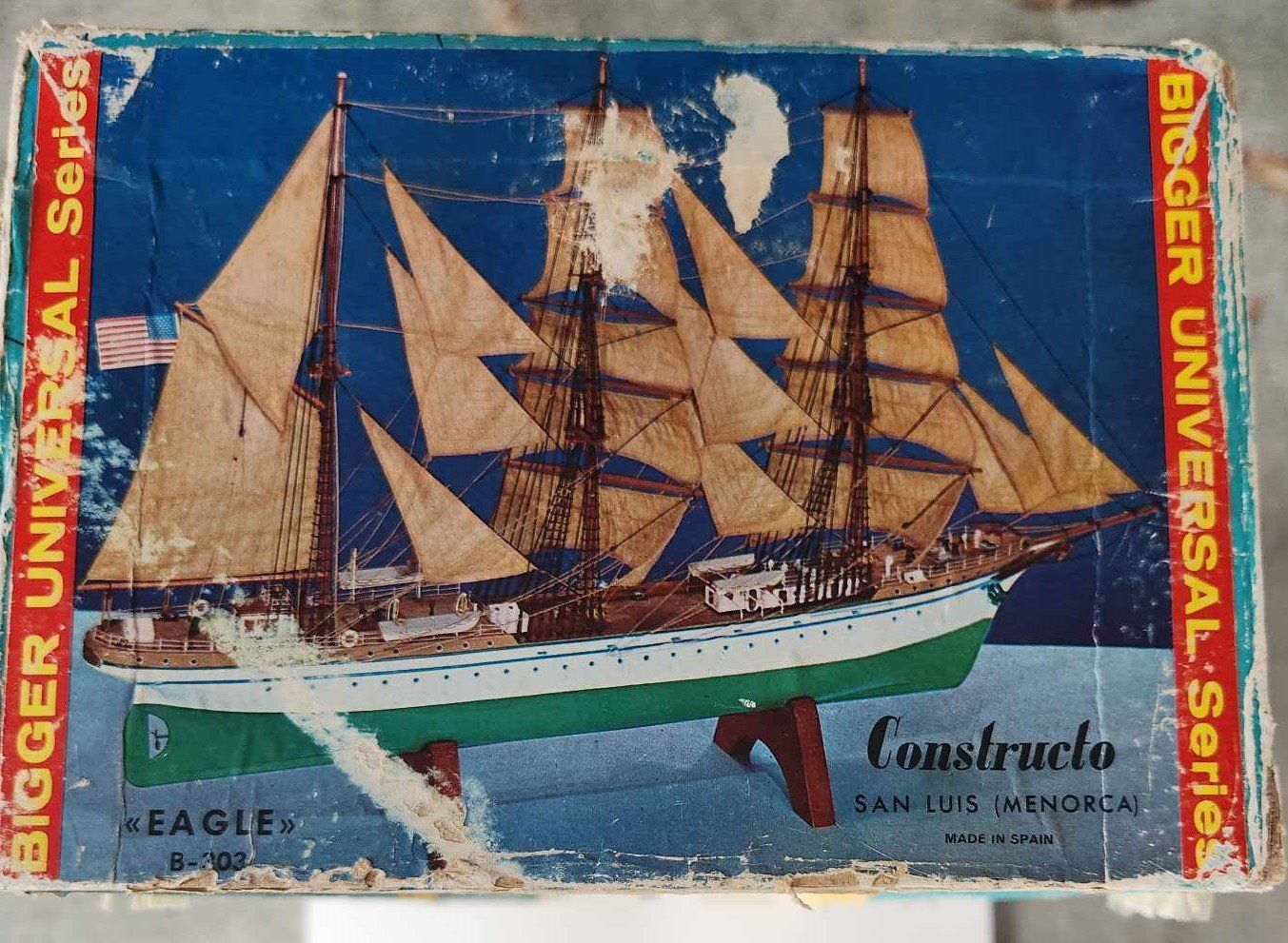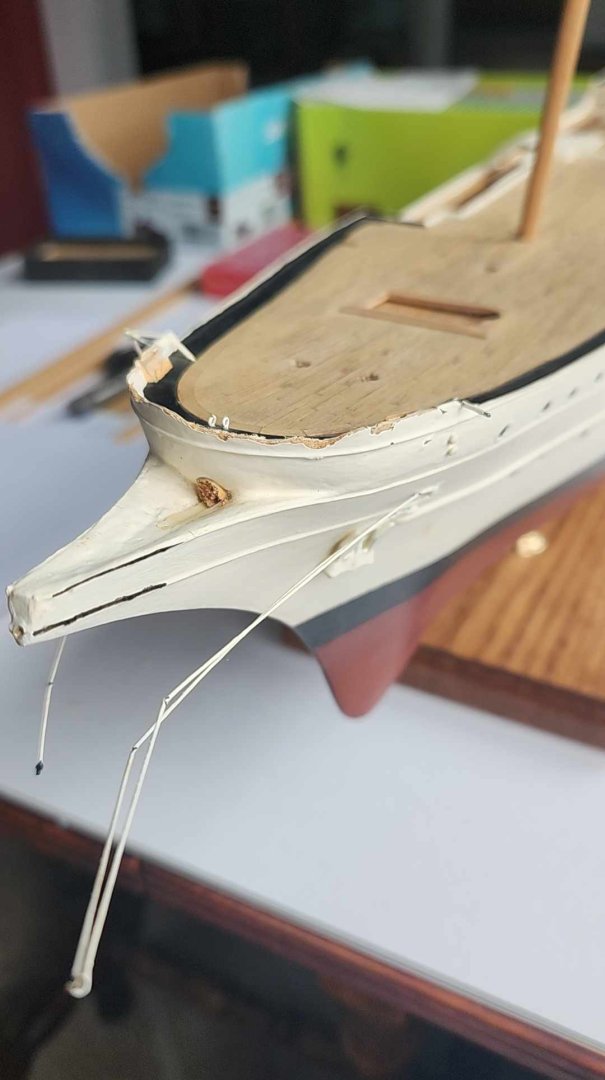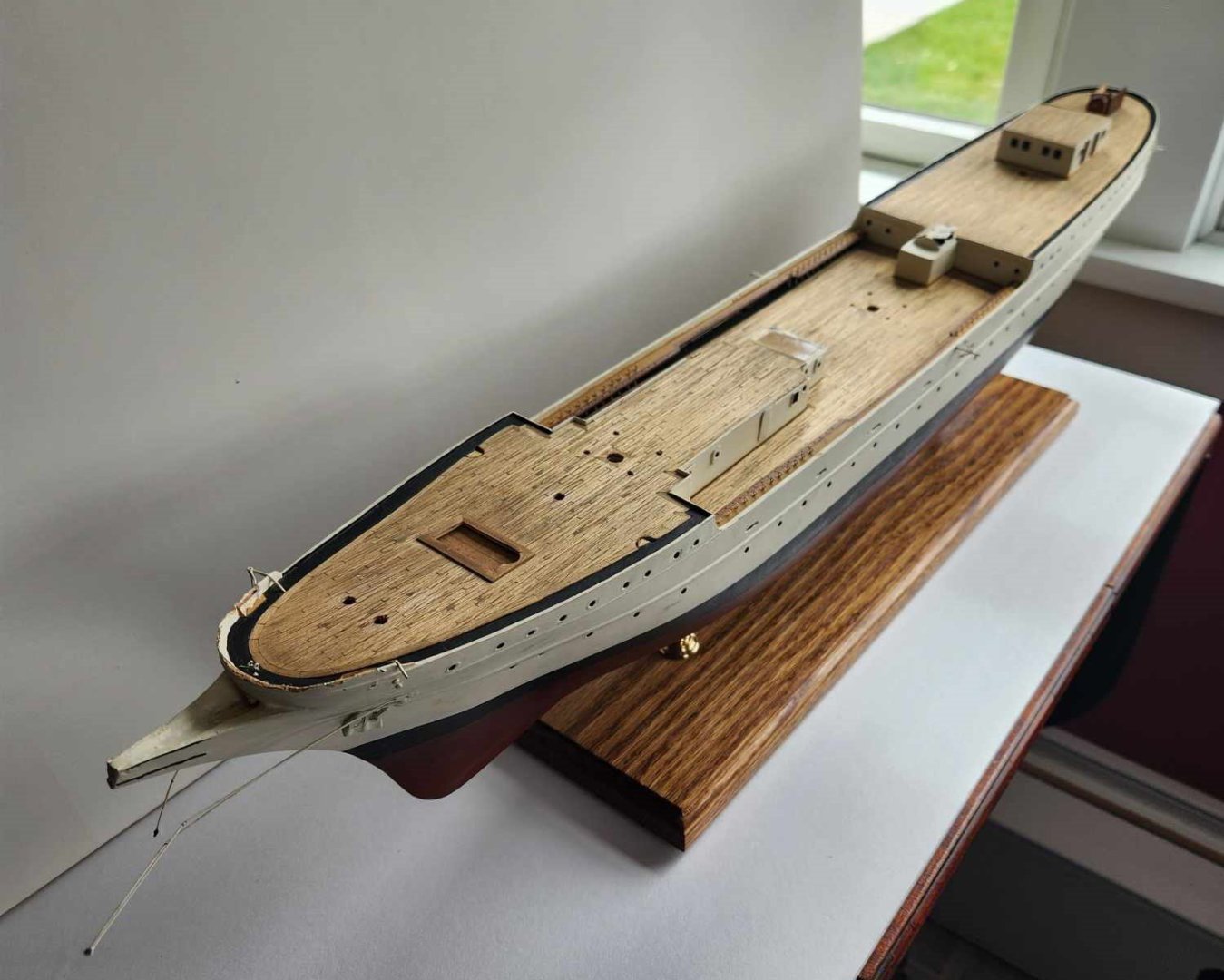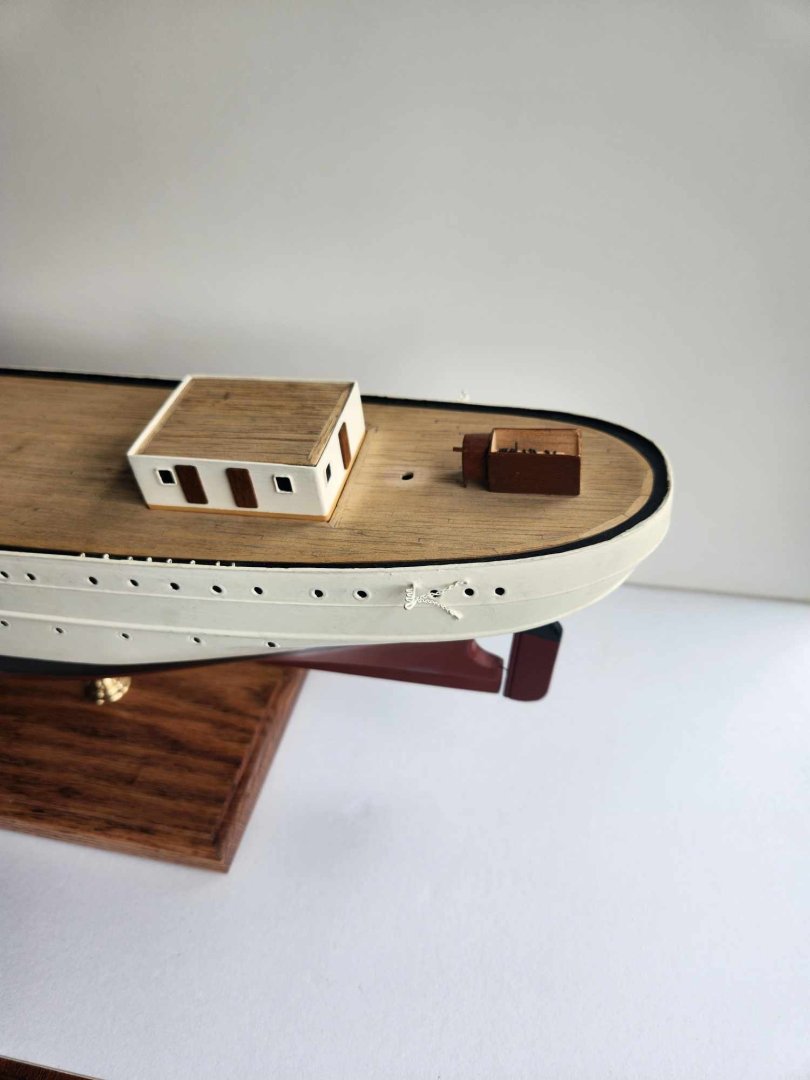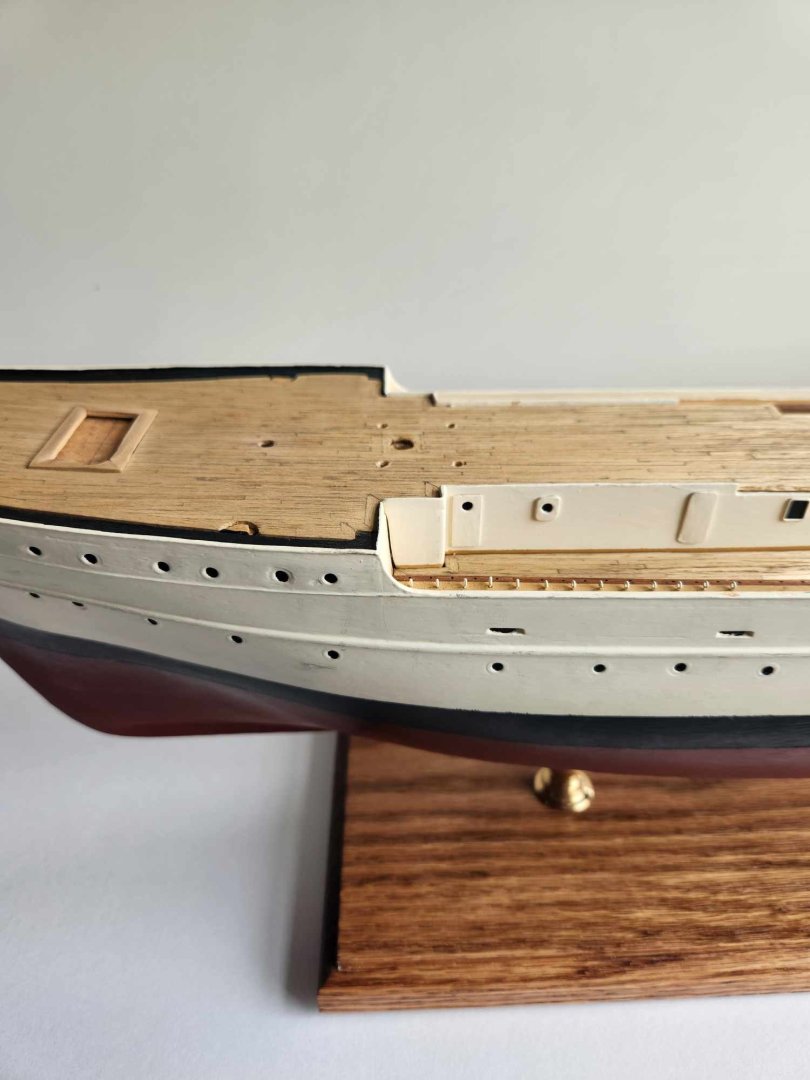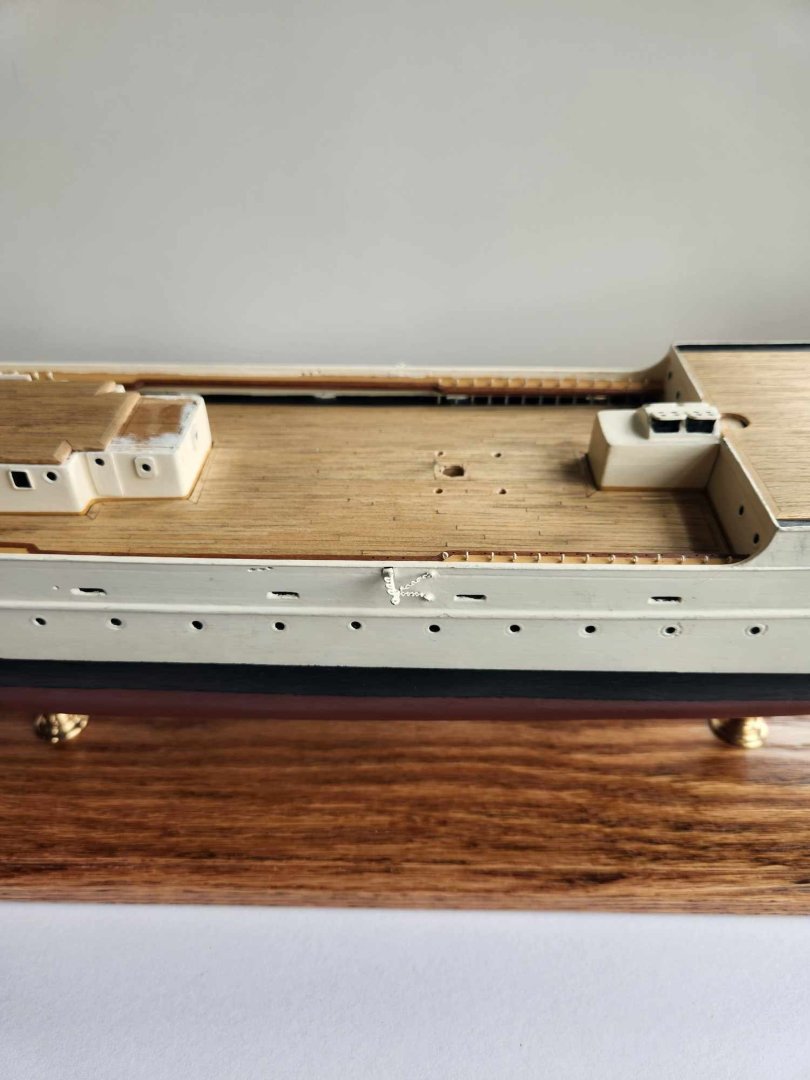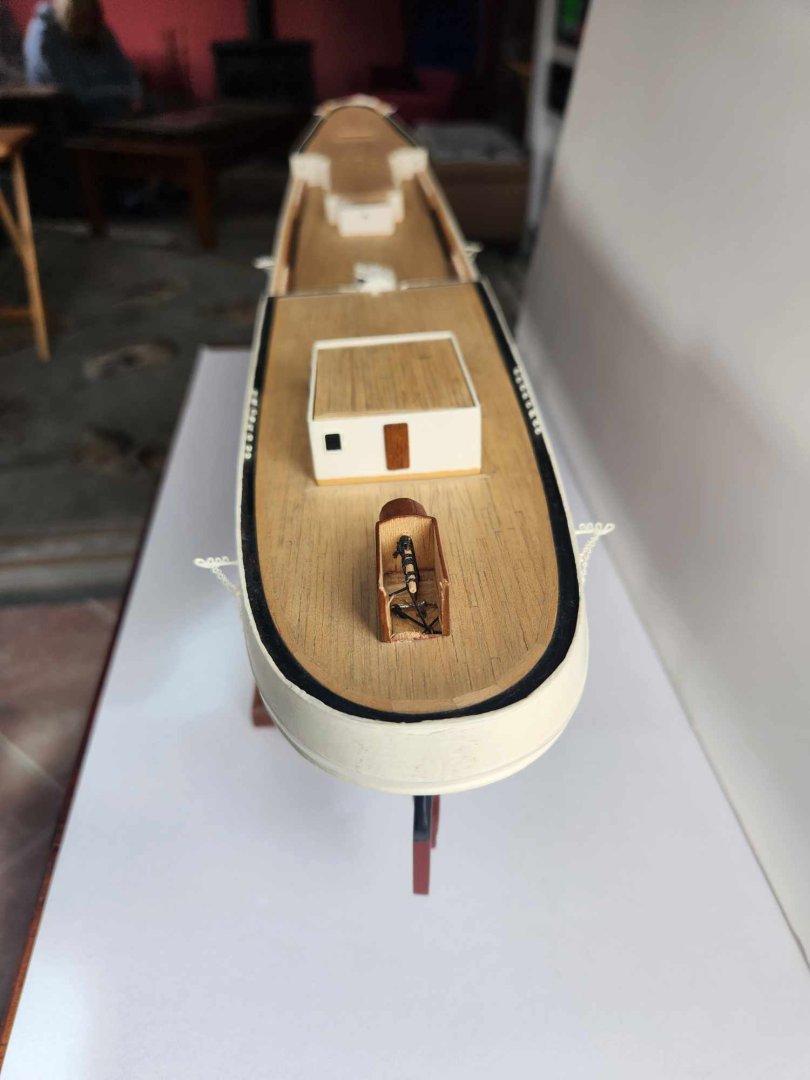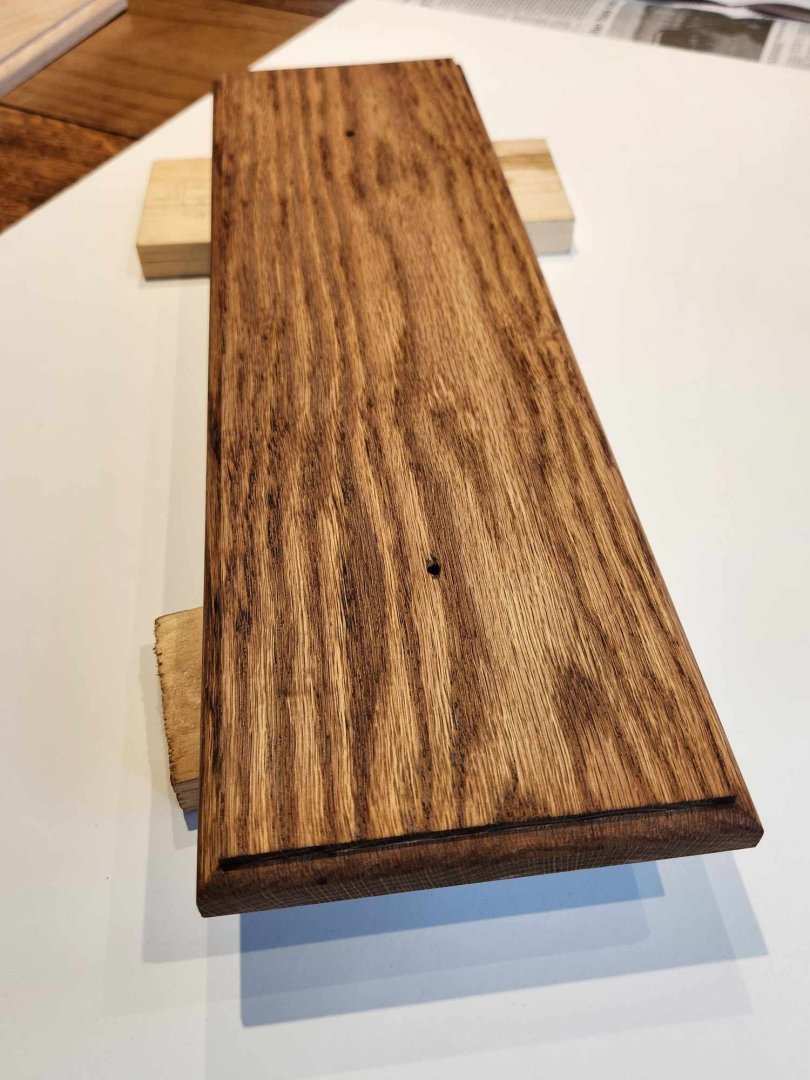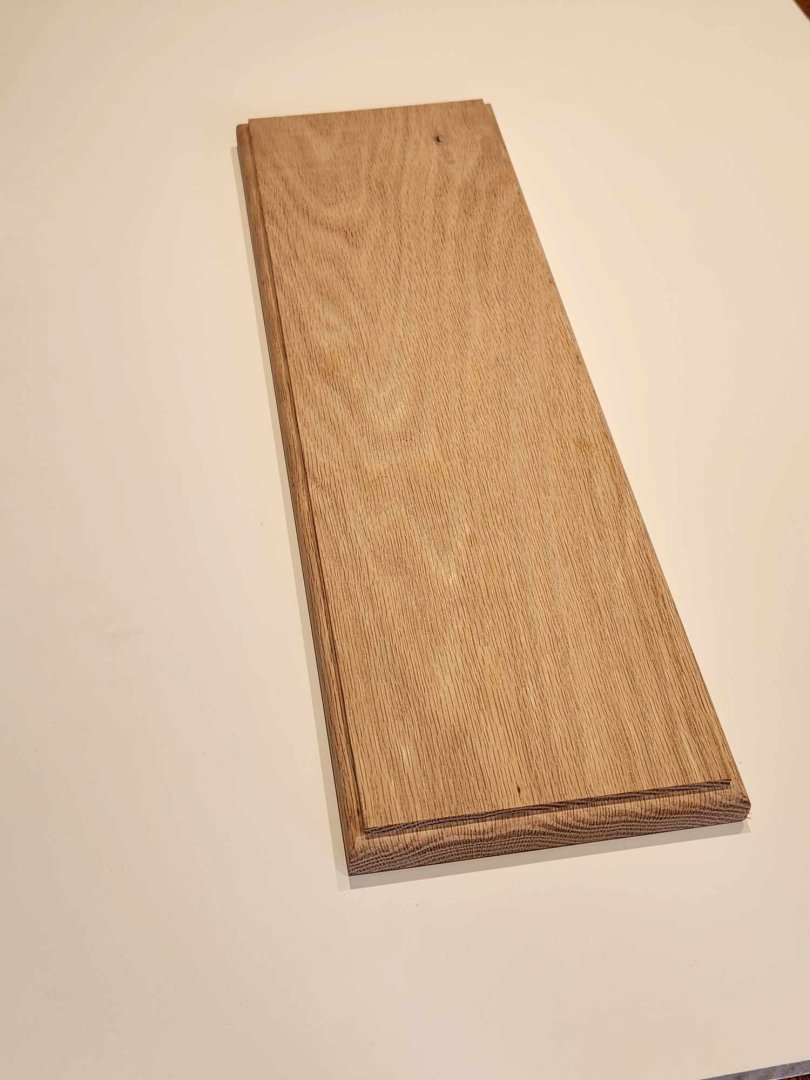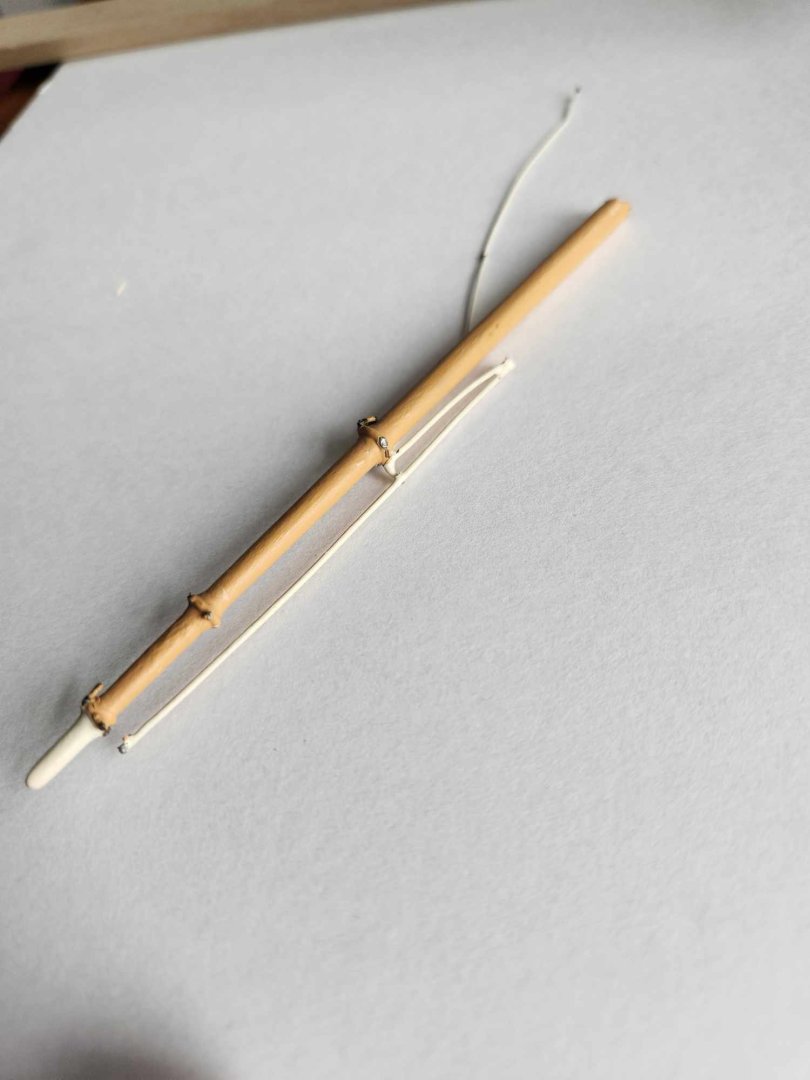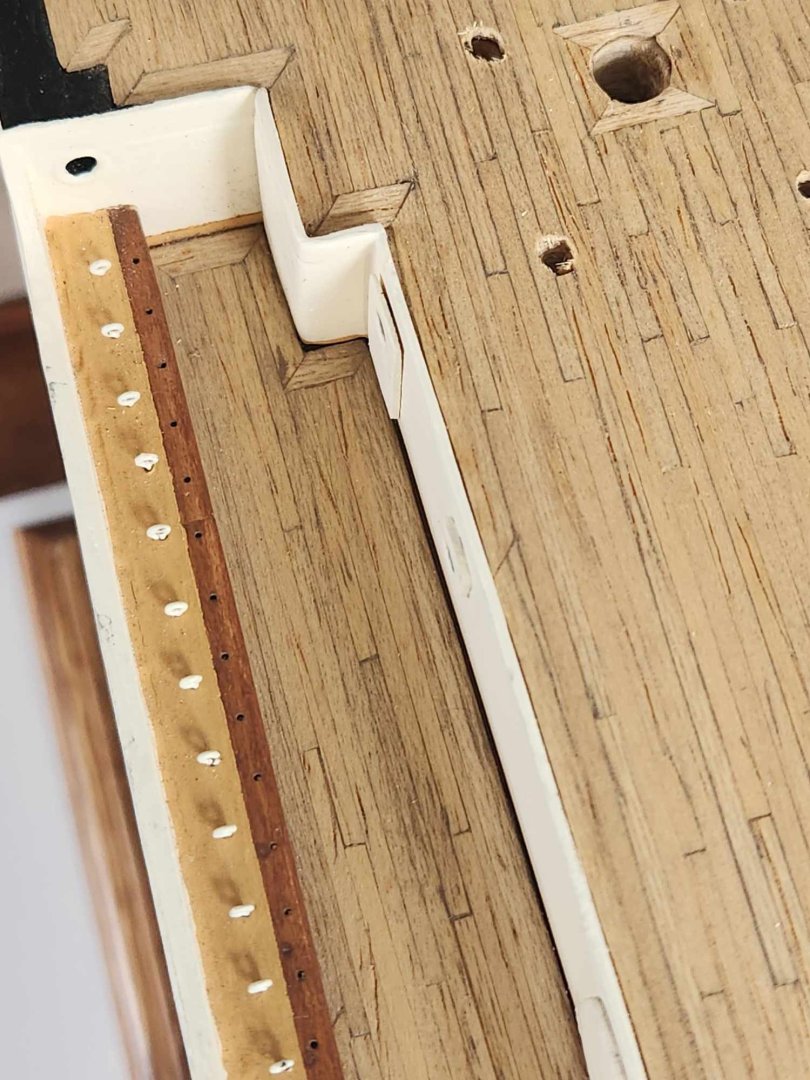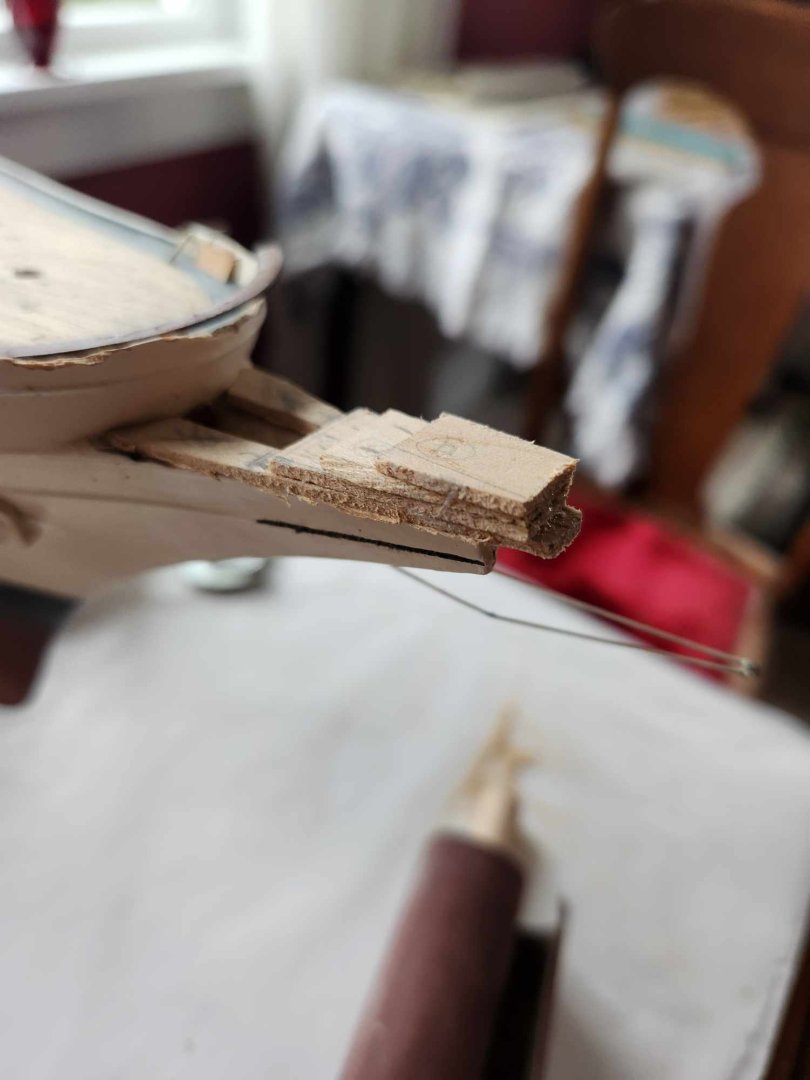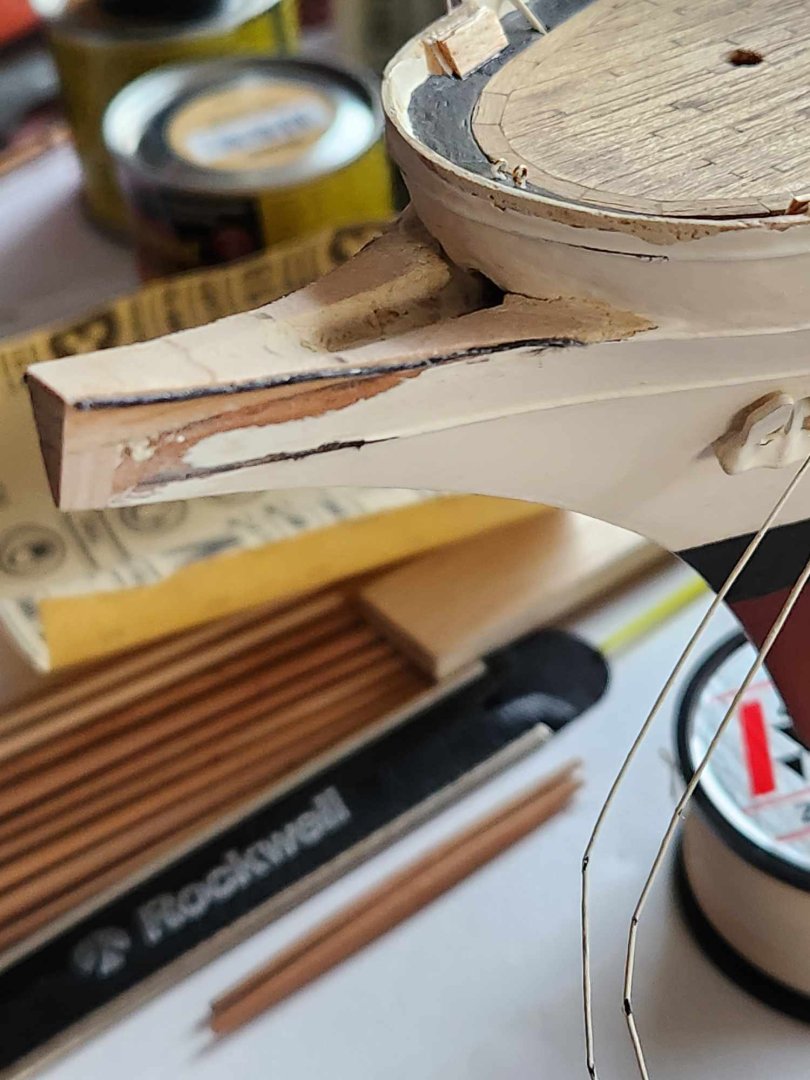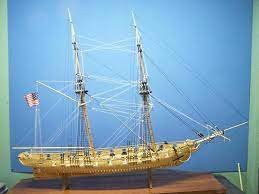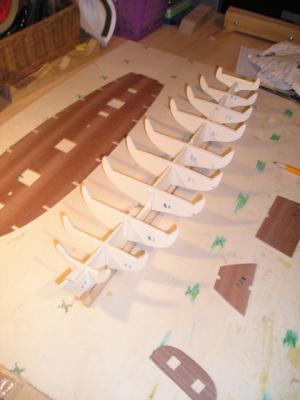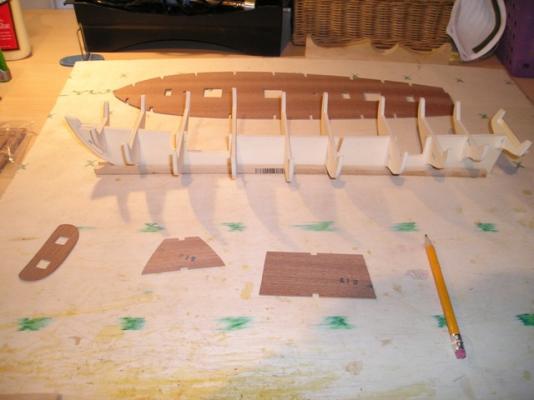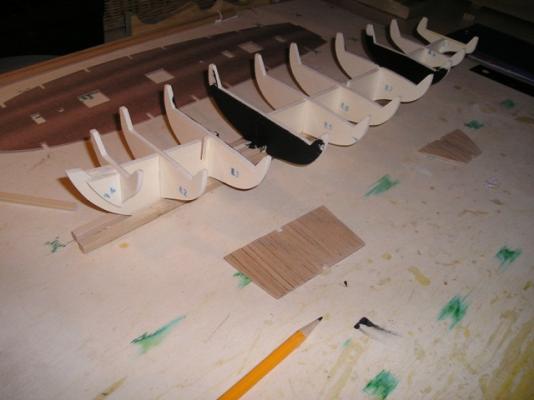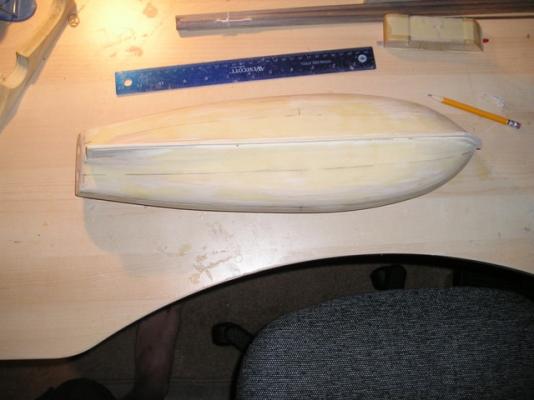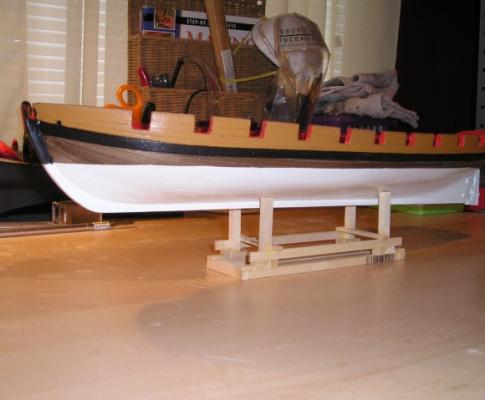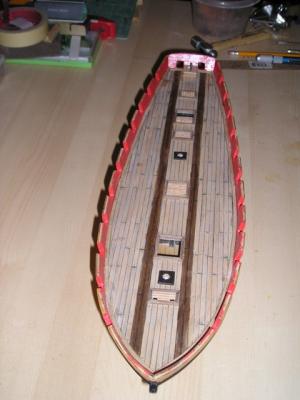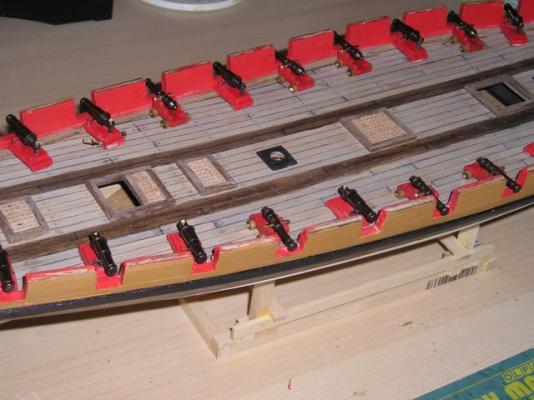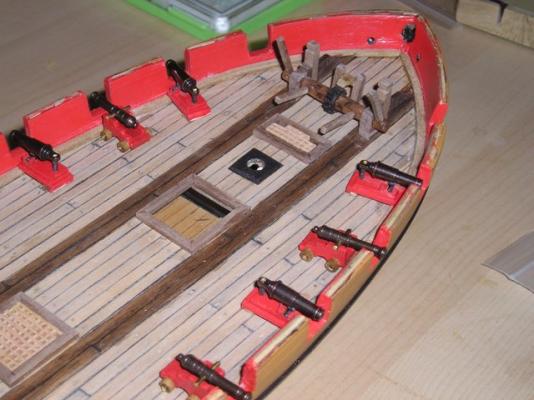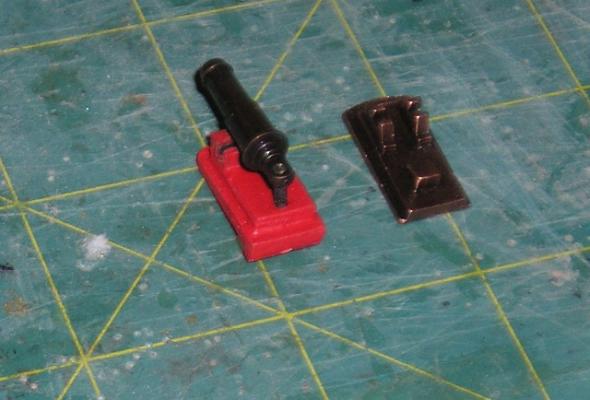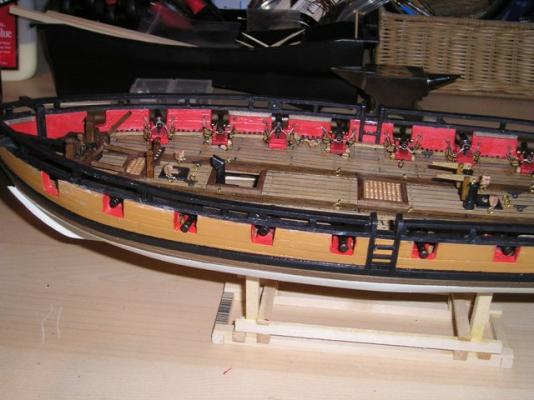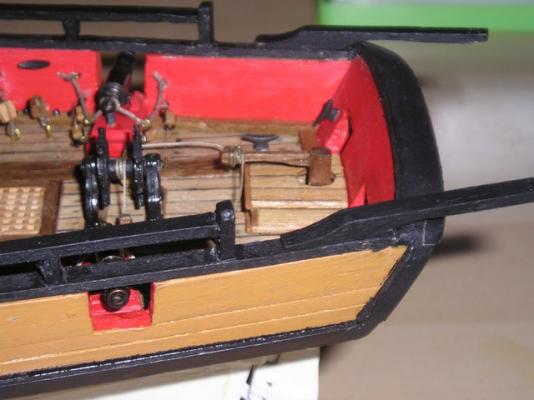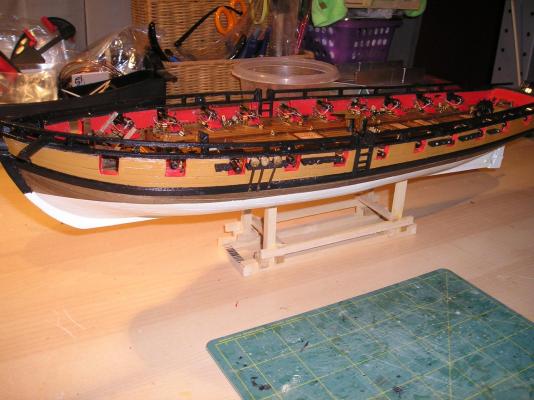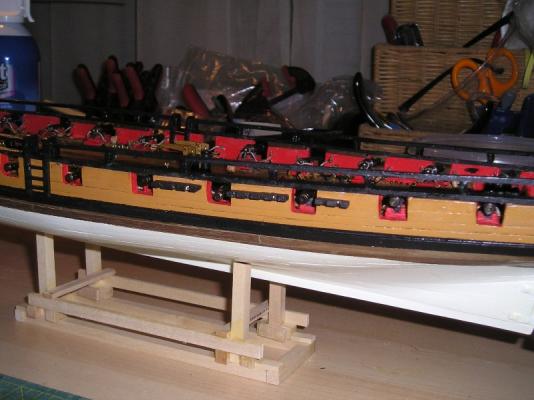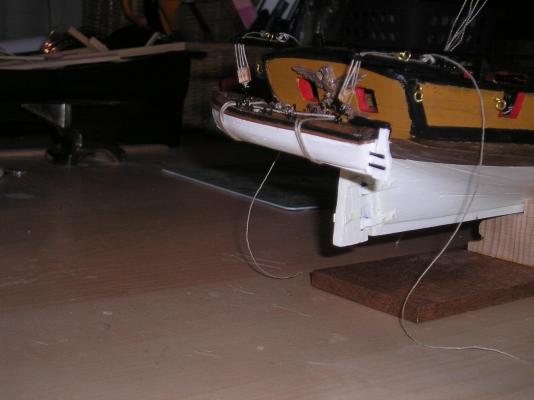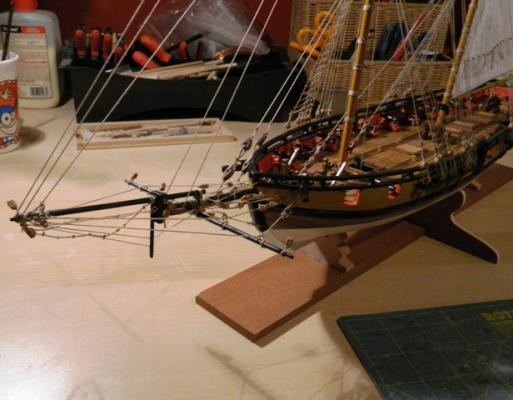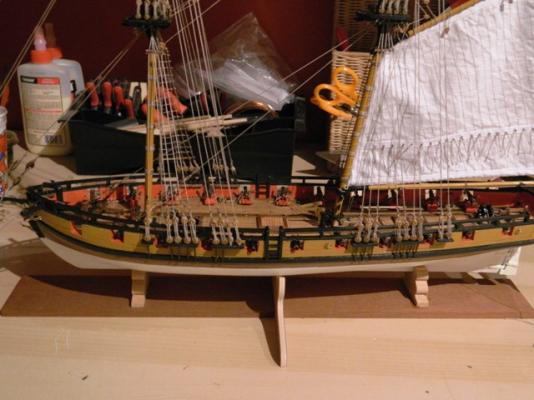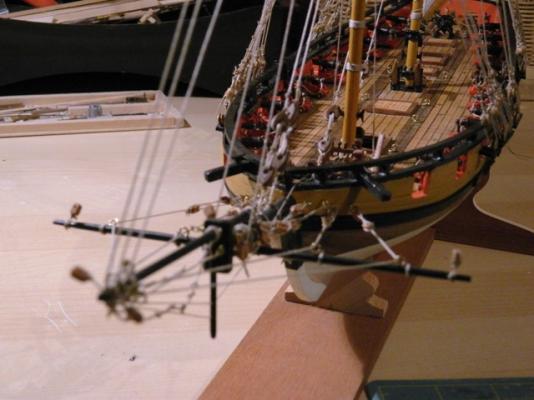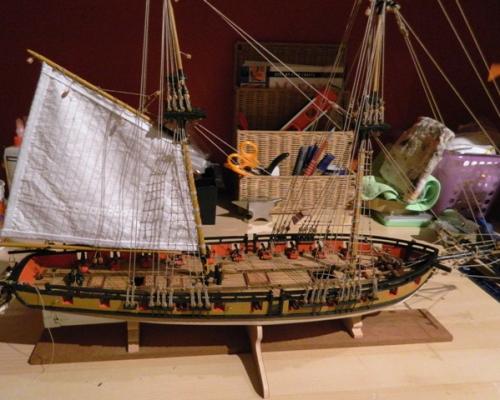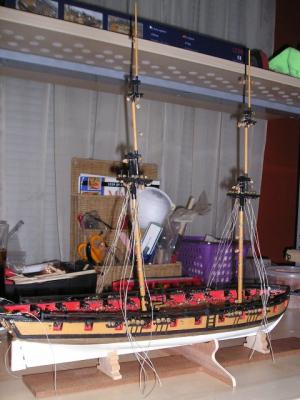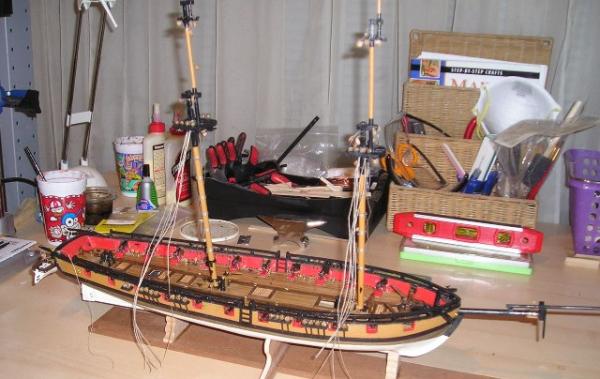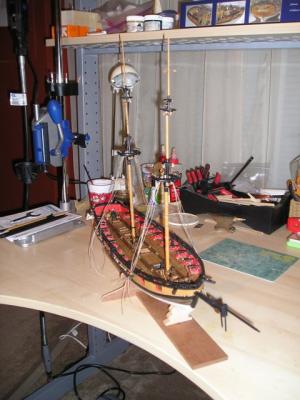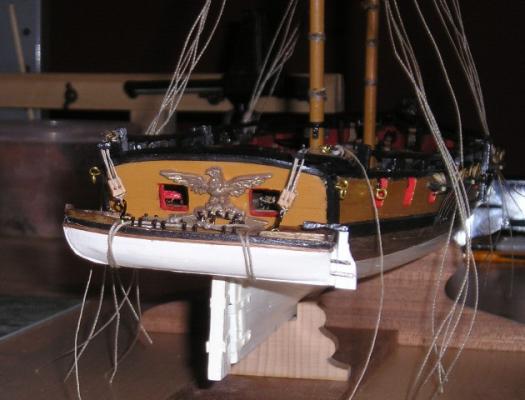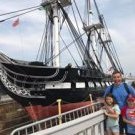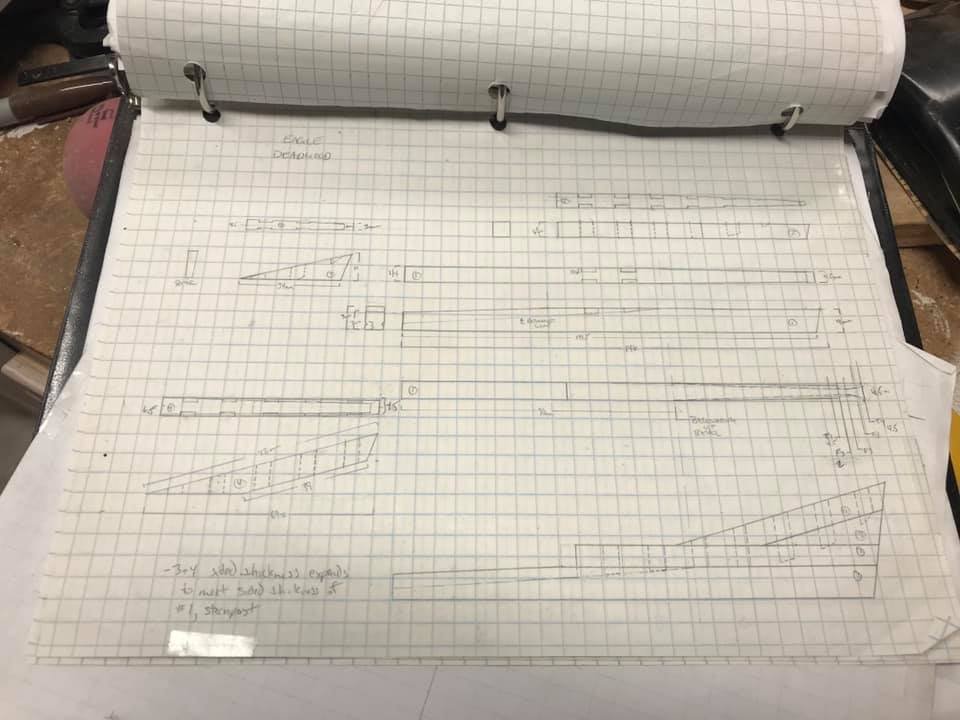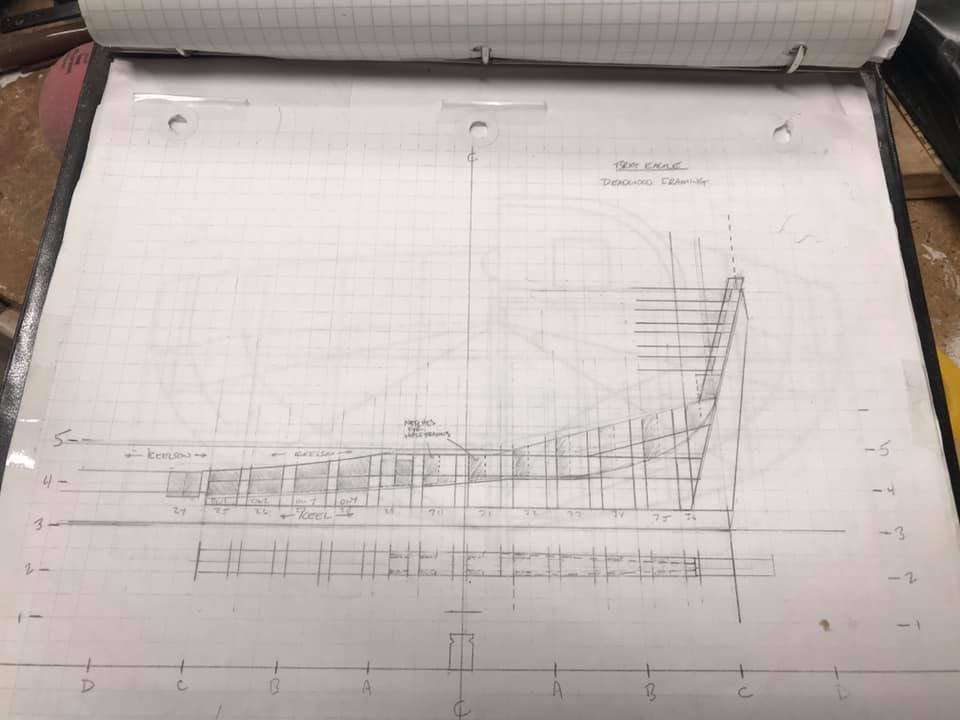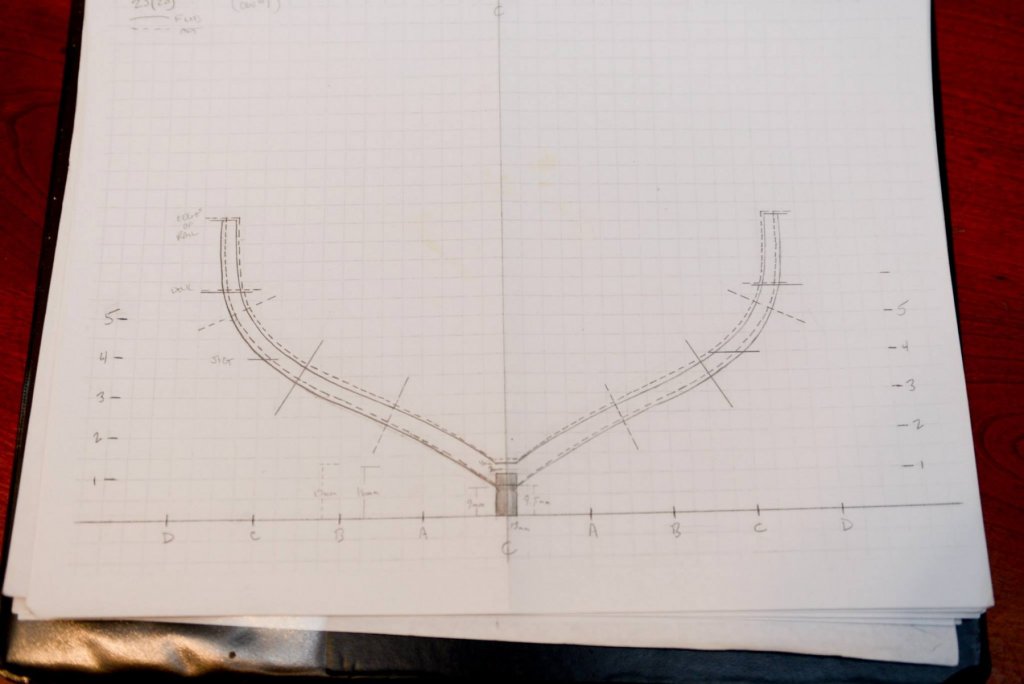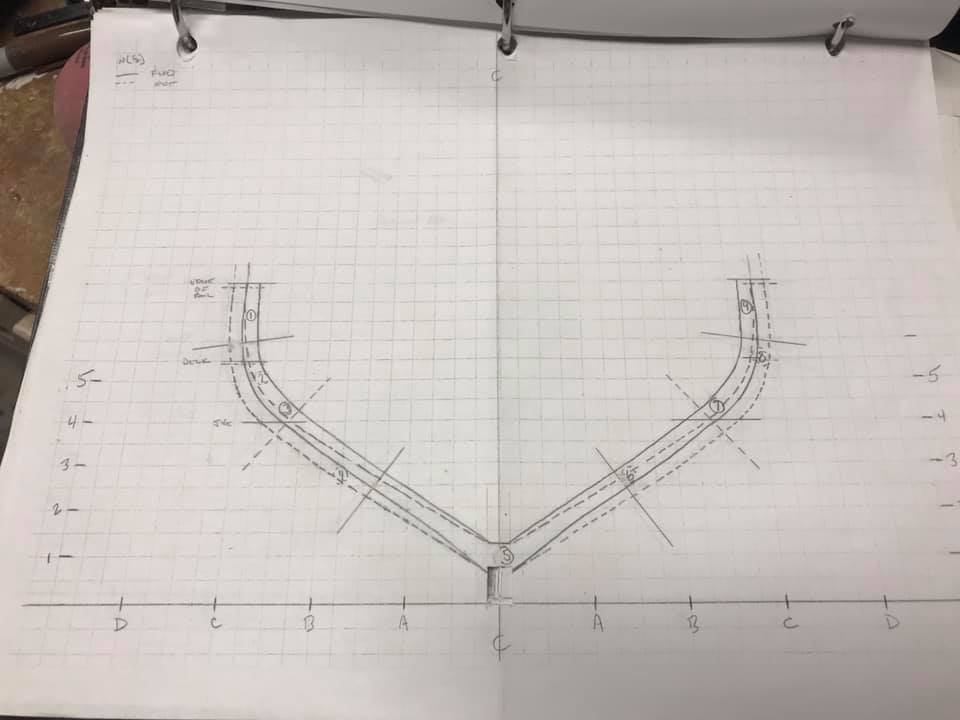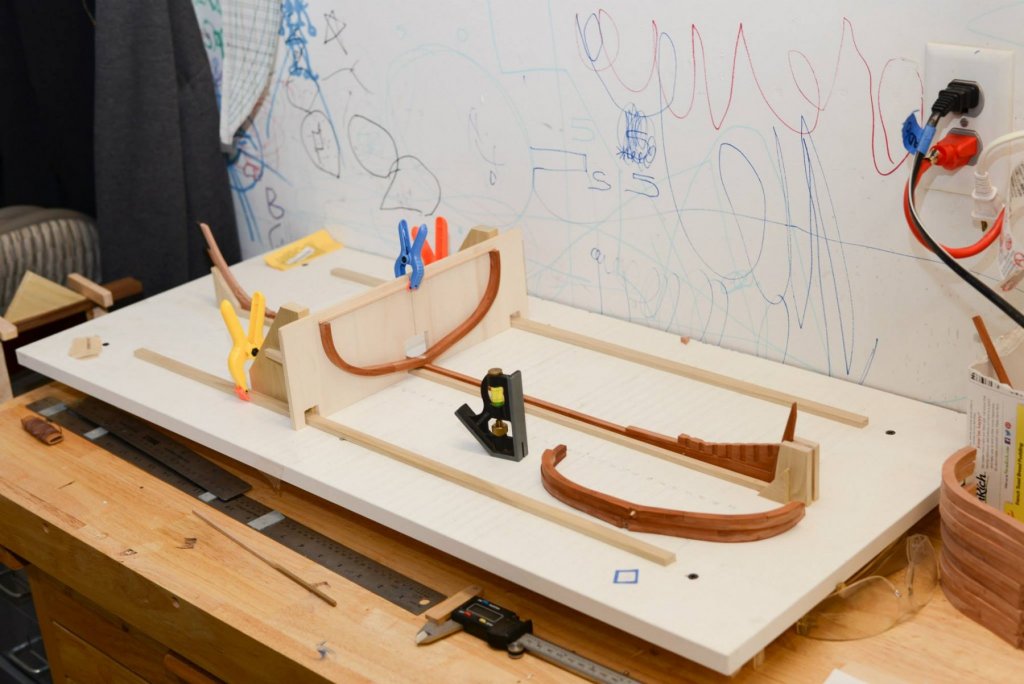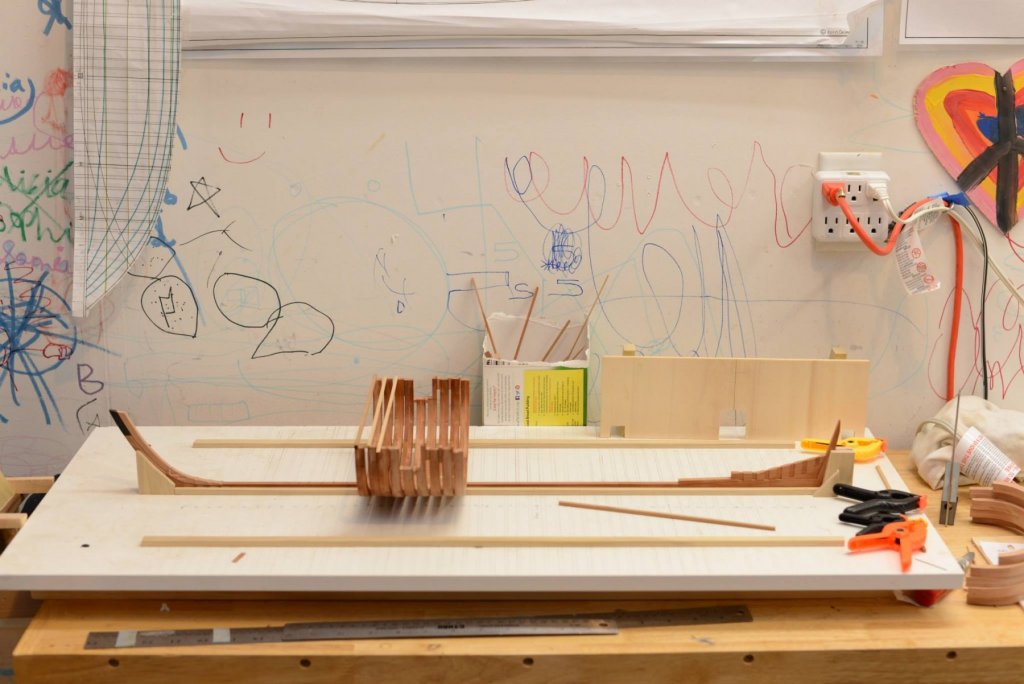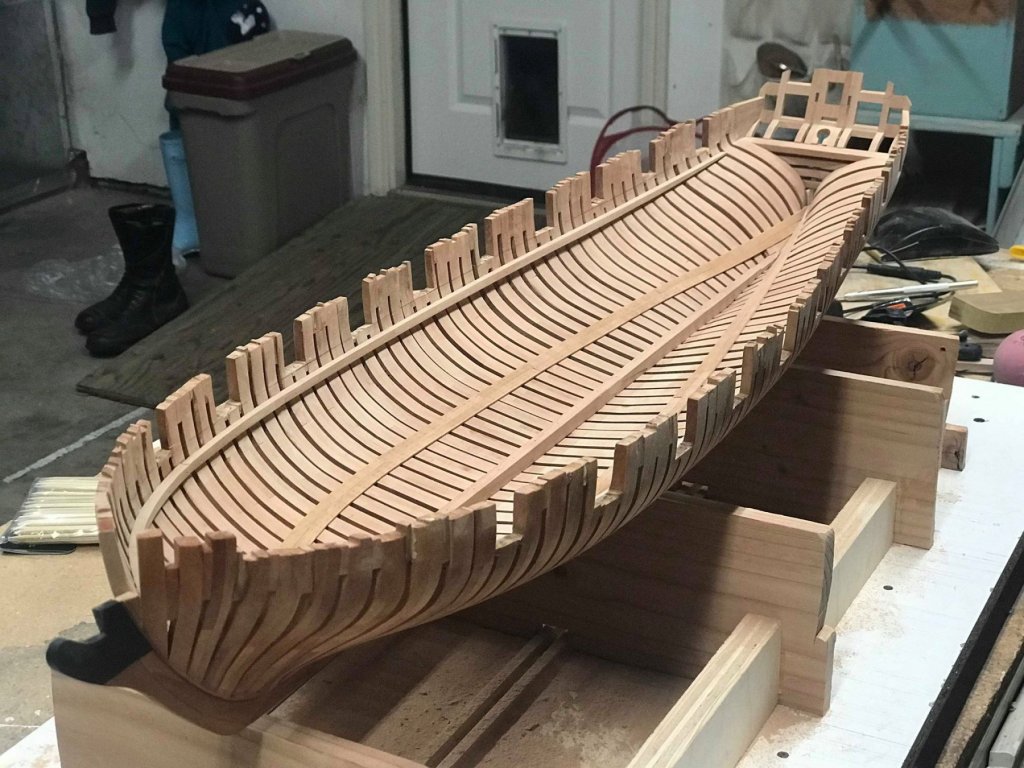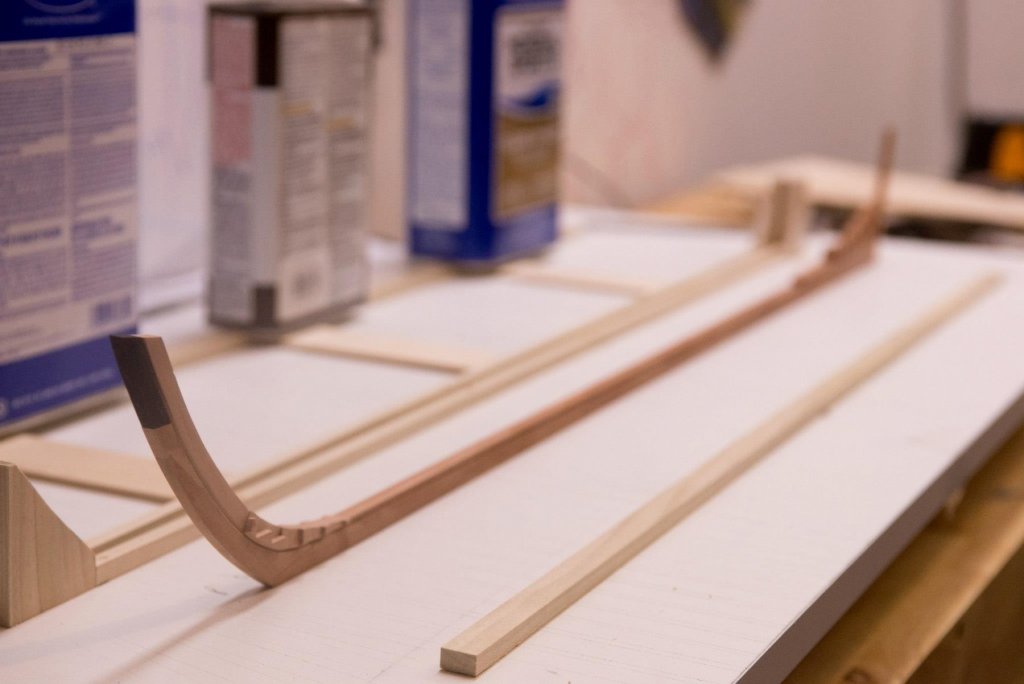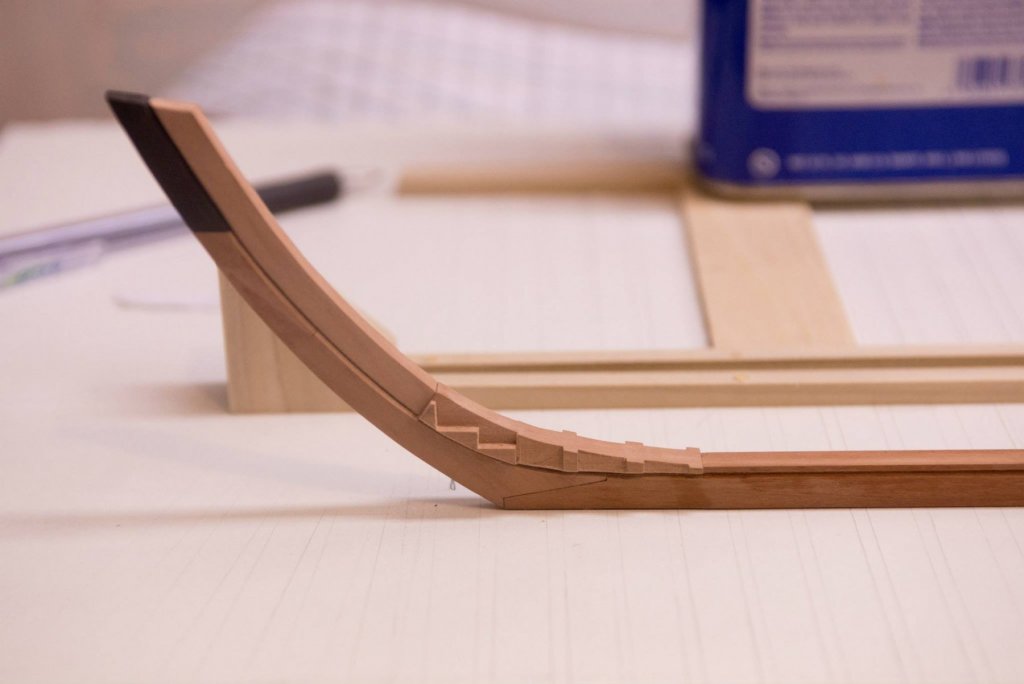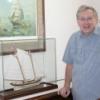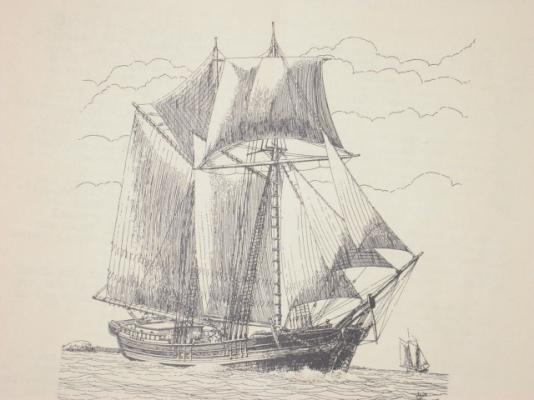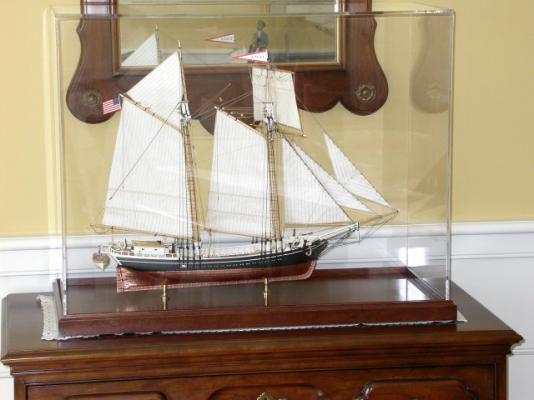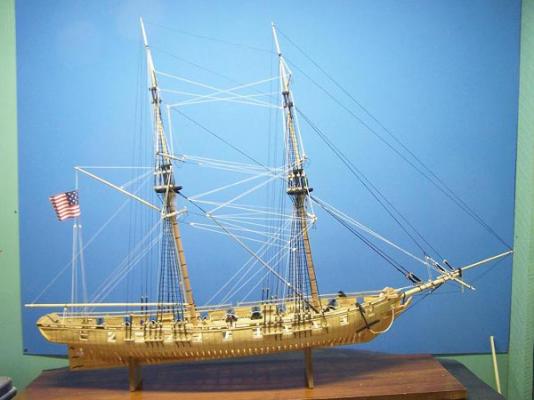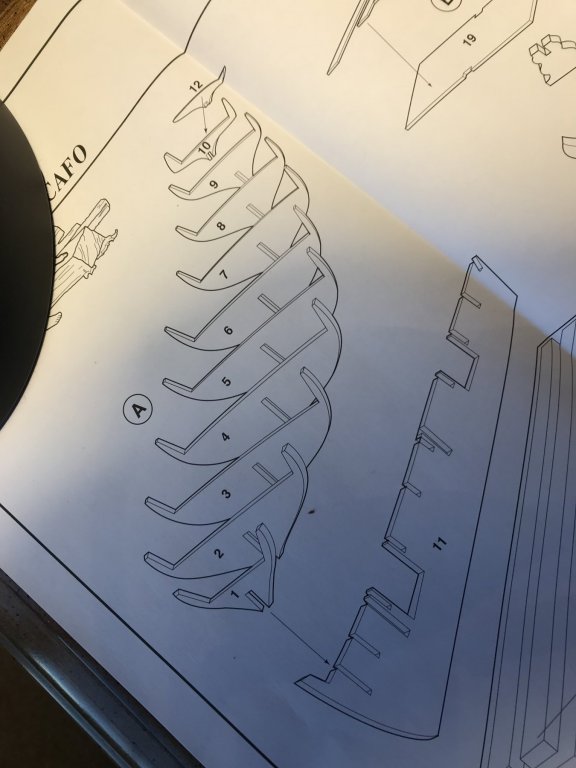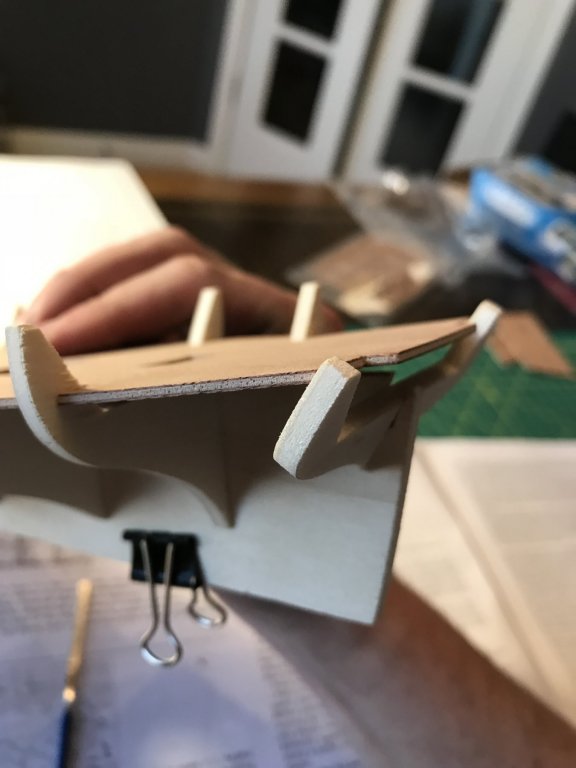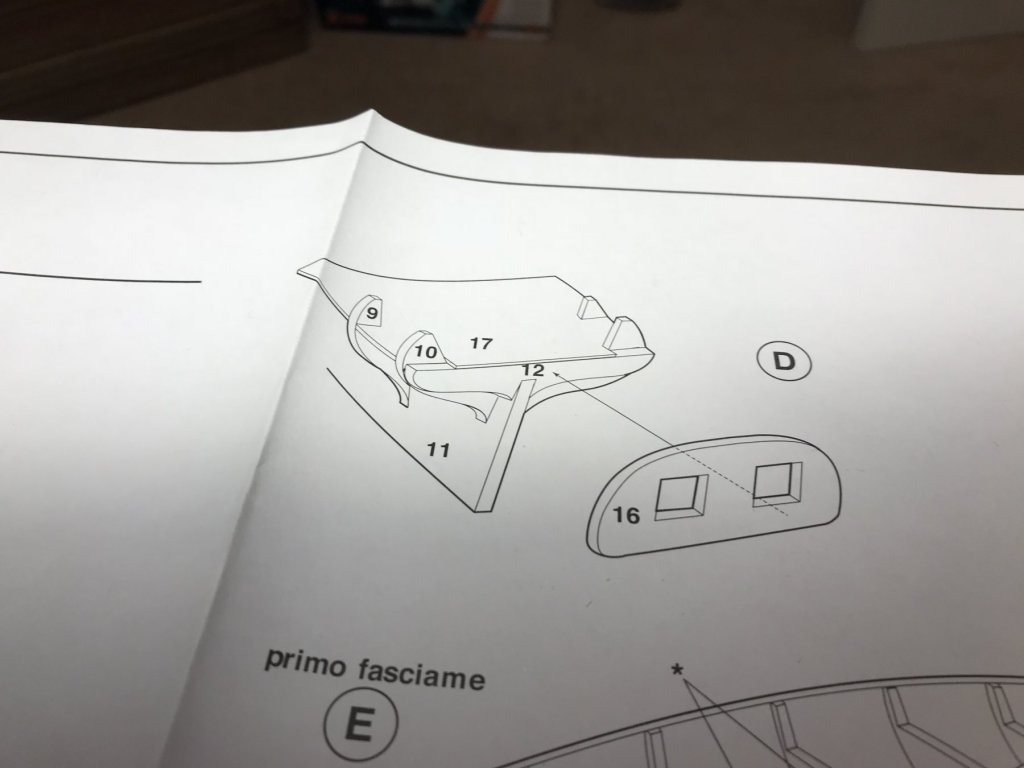Search the Community
Showing results for tags 'Eagle'.
-
Introduction US Coast Guard Cutter Eagle (WIX-327), originally the German training barque Horst Wessel. Length: 295 feet; beam: 39.1 feet; height of foremast and mainmast: 150.3 feet above the waterline (other specs are found on various Coast Guard websites). I am a retired Coastie and as a cadet, I had the privilege of sailing on the Eagle several times, the most notable being in Operation Sail 1972, sailing from New London, CT, to Europe. During the ocean crossing, we competed in, and won, the Boston Teapot Trophy, awarded annually to the training ship that logs the greatest distance under sail in 124 hours (we covered 1,104 miles). After docking in Portsmouth, England, for several days, we competed in the main event of OpSail 1972 - the tall ships race - that included three Class A ships: Eagle (United Stated), Gorch Fock II (Germany), and Dar Pomorza (Poland), along with hundreds of Class B and C sailing vessels. The five day race started off of Cowes, England, sailing north through the English Channel and the Skagerrak, and ending off the tip of Denmark. The race was highly eventful, with a great start for Eagle, many maneuvers and sail adjustments, parted sails and lines in stormy seas, and periods of unfavorable winds. To their credit, Dar Pomorza won the race, with Gorch Foch trailing by only a few minutes, and Eagle taking up third place. Following the race, Eagle made several port calls, ending in Lubeck, Germany, where thousands of visitors toured the ship, including several of Horst Wessel's original crew. The final event of OpSail was the Parade of Ships, with six square-riggers in one column, and smaller vessels in another column, sailing in to Kiel Bay, Germany, on display for the crowds attending the 1972 Summer Olympics. This was not the first, nor the last, transatlantic crossing for Eagle, and she continues to be both a rigorous training environment for the cadets, and an impressive ambassador for the Coast Guard and for the United States. All of this is to say, I have fond memories of the Eagle, and always wanted to build a model of the Eagle. In fact, I started this model in 1977, completing the hull, deck, and some of the fittings, until around 1979 when the project was boxed...until early 2024! Many military and post-military moves caused some damage to the model, but nothing that can't be fixed...and it's time to resume construction. The Model This is a model by Constructo, Barcelona, Spain. It is a wooden hull, with various wooden parts including bulwarks, cabins, shaped wooden tops and crosstrees, tapered wooden masts, spars, and bowsprit, and a few deck fixtures; plastic parts including windlass, winches, ship's wheels, chimneys, binnacles, life boats, blocks, pulleys, tensors, ladders, belaying pins (actually, fife rails), running lights, etc.; various metal parts such as eyebolts, pins, grommets, etc.; and stitched cloth sails. The instructions and diagrams (in both English and Spanish) indicate a scale of 1:185, but this would equate to a model of about 19 inches, whereas the actual model (with bowsprit) is 34 5/8 inches. From this actual model dimension, I calculated a scale of 1:102.2 for the 295 foot ship, or 1" = 8.52'. Early on, I decided that I wanted a more realistic model than would be possible with the provided plastic parts and off-scale components, so while generally following the assembly instructions, I started creating some of my own fittings, and adding details not in the instructions. The Build My goal is to complete this model to show the Eagle as it was in 1972. This means two significant variations from the Eagle's present configuration: 1. No racing stripe, as per 1972. I feel it's out of place on an historic ship such as the Eagle. There would have been better, more subtle ways to show the Coast Guard's name and colors. 2. Spanker and single gaff only. I understand why the gaff was split in later years (to match the ship's original configuration), but that's not how it was configured in 1972. Other changes that have occurred since 1972 include relocated port and starboard running lights, a new pilot house in the aft part of the waist, different life boats, changes in ventilators and other deck fittings, new antennas for current electronic navigational aids, and most recently, a new figurehead. I'm sticking to the 1972 configuration as much as possible, guided by photos and publications around the same period, along with my personal photos and recollections. My first task is to survey the damage, and develop a repair plan. I had boxed the model in its original box, but with a cut-out at one end for the bowsprit I had already finished and glued in place. Even with a large dowel protecting the bowsprit, it broke at the hull, and took with it the stays I had installed. This proved to be a blessing in disguise, because I determined that the bowsprit wasn't angled correctly (too low), so that gave me the opportunity to rebuild the stem and create a new bowsprit. Other damage included broken bumpkins (who bumped the bumpkins?), crushed wood around the bow pinrail, and a few broken fife rails. I had already painted the hull (red below, black along the waterline, white above), but the white paint was scuffed in a few spots, so it will need a new coat of paint. In my next update, I'll provide photos of the current status, outline my plans, and begin work on the model. Update#1 Below are photos of the box end and side for the Constructo model I purchased in 1977. Next are photos of the model as it stands right now. I had previously constructed the decking with pieces of 1/16" square stock, sanded and lightly stained to resemble the Eagle's teak deck. The below image shows the broken bowsprit. The dolphin striker, martingale stay, etc., are not correctly sized, which will be corrected when I rebuild the bowsprit. Although several of the above pictures show a finished base, that was actually the first sub-project I did in this process. I started with a piece of bare oak board, cut to size, routed the edges, then sanded and stained with three coats of golden oak stain, followed by three coats of wipe-on satin polyurethane. I ordered the brass stanchions online, and had to modify them by drilling out the internal threads (for the bolts that came with them) so I could fasten the base through the stanchions into the ship's keel and hull. Now to start repairs. Below shows where the bowsprit was broken off, with some of the stays dangling, and the edge of the bow chipped away. Also note the bumpkin on the right is missing the eye and bottom support. I built up the stem using several layers of wood, so as to bring up the angle of the bowsprit, as shown below. Repairs are mostly done, as shown below, although a few touch-ups will be needed after I remove the dangling stays and re-work their attachment points. I used wood filler to repair the edge of the bow. Still needs some filling and sanding. The forward pinrail will sit on top of this edge, which will hide any slight imperfections.
-
So I have shelved for the time being my Yacht Mary build, there are a lot of areas I am needing to learn better and sought out new builds to gain experience. ***DRUM ROLL*** To gain the experience desired, I have decided to build the Brig Eagle from the 1814 war on Lake Champlain against the British. The history of Eagle seems pretty well known, as there are several other blogs on here building this beautiful ship. The Eagle had a short known life and historical significance, but she played a great role in defeating the British for the last time against the Americans. This model is a scratch-build, and I am planning to involve Chuck's model of the Long Boat kit as well. This model project is being built at 1:48 scale. I will be using Yellow Alaskan Cedar for this build. Got some wood from Chuck Passaro and additional wood from a lumber specialist locally. Many thanks to Mr. Chuck Passaro, ChadB, Bill Edgin, Dr. Kevin Crisman, and Gene Bodnar
-
I started working on the Eagle again and thought I would post some pictures to my build log. That’s when I noticed the Model Ship World had changed and I would have to start a new log. I want to say the update looks great. Well, first I guess I will post my old photos and get everything back. I started the Eagle a good time ago and stopped a couple times. The kit is nice, but I did do a little bit a bashing. I changed up the guns a bit and got rid of gun carriages for the carronades that came with the kit and made my own. I also made the stern davits for the boat I made. Other than those small changes, I followed the kit instructions for the most part with a few minor adjustments.
-
I started this build waaaay back in 2013 after I finished my Triton cross section, but really didn't want to start a build log until I had some substantial progress done (I'm a really slow builder). I was also lofting my own frames and lived in perpetual fear up until recently that I made some mistake that would only become apparent when I started fairing the hull and would end in the ruin of my build. I figured having a multipage build log when that happened would make it that much harder to recover my confidence. Well, I got past that point and it turns out my drawings worked, so a slow day at work seemed like a good time as any to start a log. So- the Eagle... built on Lake Champlain in 1814 in 19 days (the irony of spending nearly six years making a model of a ship built in 19 days is not lost on me) to help Thomas Macdonough's fleet stop the British from taking control of the lake and essentially cut New England off from the rest of the country. He succeeded at the battle of Plattsburgh, helping keep the British from having any claims for territory in the Treaty of Ghent. After her long, illustrious career of a few months she was laid up in ordinary where she lasted about as long as you would expect a ship of such quality as that of one built in 19 days would last. The wreck sat on the bottom of the Poultney River until 1981 when it was rediscovered and the archaeological study started by the great people of the Texas A&M Nautical Archaeology program (a career choice I found out about 20 years too late in life). I started the model using the book done on the study (and one worth every penny if the subject interests you), The Eagle: An American Brig on Lake Champlain during the War of 1812, and Gen Bodnar's practicum for the Eagle found on modelshipbuilder.com. The practicum was invaluable for lofting frames and giving some direction on order of building but I have pretty much moved away from it at this point. I've probably used roughly a billion other references at this point but here's a couple that have been in heavy rotation.. Robnbill's build log of the Eagle- Bill did a great job of documenting things. When I don't feel like reinventing the wheel I like to check in with his log Coffins of the Brave: lake Shipwrecks of the War of 1812- some updated info on the eagle and have gleaned some building practices of the time from it. Excellent read. The Texas A&M ship model laboratory model of the Jefferson- not the same builder but helped me wrap my head around drawing up a stern. Also, just a really nice model. So anyway, that's some backstory. I don't want to make a "how-to" log like I did with my cross section and plan to just keep it picture heavy. If there's any questions feel free to ask and I'll happily answer. A few photos to cover the first five and a half years... Starting with the plans. Frames, deadwood, etc... I tried to work off my primary source, The Eagle: An American Brig on Lake Champlain (from here on out "The Eagle book") as much as possible and make this model as accurate as possible. Drawing everything was a job and learning experience in itself. Keel laid. Model to be made from pear, ebony, and maple Frames started going up. The pear will be finished in Danish oil, so I had done the keel, deadwood and the sides of the frames as i went along to save having to go in between every frame later on. ..and this is the point where life outside of modeling took over for a few years. I have two little ones that I spend tons of time doing stuff with, and also moved to a house that required some attention to drag it out of the 70's. Framing moved along slowly and I wanted to put a nice stern together, which took some research (the stem and stern of the wreck were pretty much gone). Fast forward to a few months ago and inside and out are faired. The Eagle's frames were all over the place and I used those locations for the model, which is why a keen observer may think I was drunk while lofting frames. Work has progressed a bit farther, but it's about high time to break out the real camera and retire the iphone for this build log. Chad
-
The Topsail Schooner “Eagle” had a length of 81’ 7”, beam of 22’ 8”, depth of 7’ 10”, and tonnage of 140 tons. Both the “Eagle” and her sistership “Arrowsic” were built in Arrowsic Island on the Kennebec River (near the present shipbuilding city of Bath, ME) in 1847 for the lumber and ice trade by builder Samuel Pattee. During the mid-19th century small schooners of this sort were widely employed in the East Coast trade; their schooner rigs an easy adaption to the prevailing westerly winds and economy in crew size. The model was scratch built to a scale of 3/16” to the foot (1:64) using old Model Shipways plans by William Zakambell. Additional research was conducted at the Maine Maritime Museum in Bath, ME where a large scale model of the “Arrowsic” is on display. The model is plank on solid construction, with built up bulwarks, planked decks and topsides, coppered bottom, and scratch built deck furniture/fittings. Limited commercial fittings were utilized where appropriate, and the rigging is proportional linen line with Warner Woods’ blocks. The Topsail Schooner “Eagle” is my 3rd wooden ship model and my 1st scratch build. Pete Jaquith Shipbuilder
-

Brig Eagle by robnbill - 1:48
robnbill posted a topic in - Build logs for subjects built 1801 - 1850
Once I saw the end approaching to my USS Constitution build I started looking for my next project. I was looking for something that would hook my interest in both the construction as well as the history. I wanted something challenging that would also push my skills. I found and downloaded Gene Bodnar’s Practicum on the USS Brig Eagle. This is a plank on Frame Admiralty build that can be fully rigged or left unrigged in Admiralty style. The Eagle was built at Vergennes, Vermont between July 23rd and August 11th of 1814 by shipwright Adam Brown. An amazing feat in itself when you consider it generally took many months to build a ship of this size and the shipbuilders who built this ship did it in only 19 days. But time was of the essence. The wreck of the ship was found in the freshwater mud off Lake Champlain and fully documented in the dissertation. It was a built in 19 days for the war of 1812 and was responsible in large part for the defeat of the British fleet in the Battle of Plattsburg Bay. However it was built of green wood and began to rot almost as soon as it was completed. After the war it was stripped and mothballed and eventually sunk where she was mothballed. The practicum is a detailed instruction for taking the basic ship's plans and working through the lofting process to the completed build. This modeling project at 1/4" = 1' scale is based on a Masters Thesis and plans by Professor Kevin J Crisman of Texas A & M University. Here are some brief notes on the Eagle from the Texas A&M Nautical Archaeology Program site. The United States Navy brig Eagle was built at Vergennes, Vermont, and constituted the final addition to Commodore Thomas Macdonough's War of 1812 naval squadron on Lake Champlain. The 117-foot-long hull was constructed and launched by master shipwright Adam Brown in only 19 days during the summer 1814. Outfitted with two masts and 20 cannon, and manned by a crew of 150 men, the brig participated in Macdonough's defeat of an invading British naval fleet at the Battle of Plattsburgh Bay. The Eagle was maintained for several years after the war, until her timbers became decayed and she was abandoned by the Navy in 1825. The submerged and partially-dismembered wreck of the Eagle was discovered in 1981 near Whitehall, New York. A two-year archaeological study of the vessel was sponsored by the Champlain Maritime Society, during which time the dimensions of the hull timbers were documented by divers. Archival research was also conducted on the history of the warship. Wreck plans were prepared from the measurements recorded by the divers, and the techniques of hull construction employed by Adam Brown were examined. The wreck plans and contemporary construction information were then used to reconstruct the original appearance of the brig. The design and assembly of the Eagle were graphically depicted in the form of hull lines, construction plans, and rigging plans. The hull of the brig was compared to other War of 1812 warships on the oceans, and on Lakes Erie, Ontario, and Champlain. The evaluation of the hull and the comparison with contemporary vessels have led to the conclusion that the Eagle was specially designed for accelerated construction and a career on the shallow, protected waters of Lake Champlain. This is attractive because it will be a challenge that will require lofting my own plans as well as building my first Plank on Frame ship. It is also supported by a detailed practicum as well as the extensive dissertation. While it is being built by a small number of modelers on Model Ship Builder, Gene Bodnar, the developer of the practicum is very active on the boards. Fully rigged the ship’s dimensions will be: L = 45" H = 31 1/4" W = 6 1/2" Here is a photo from the practicum. -
Started my build of the Eagle American Brig from Corel yesterday and have already found the plans to be lacking in some detail. First off as I started to dry fit the frames onto the keel I found the two frames closest to the stern would not fit as is indicated in the drawings. Additionally the when I dry fit the deck in place it will not fit flush with the last second to last frame as indicated in the drawing nor is it clear how the last frame should be attached to the keel.
-
I am restoring a kit model of a square topsail schooner which was caked in dust and grime, all the rigging in tatters. No vessel name. The kit/model is probably 40 years old And has sentimental value to its owner.I wonder if anyone knows of a kit of such a vessel which could be an aid in rigging details and deck details. Or any other pertinent references.
- 11 replies
-
- eagle
- model shipways
-
(and 2 more)
Tagged with:
-
Well, my semester is over and my grades are submitted, so this build begins. I have been anticipating it for a couple weeks, but didn't have the time to really dig in, and I didn't want to chip away. So, since I'm a rank rookie, I spent that time reviewing the parts, reading the manual, stalking the site for tips and builds in progress, and doing some novice planning.... Also, spent a good deal of time on YouTube watching builds, though there was nothing available for the model I chose, and setting up a small modeling workspace in my garage/gym/reloading space/man cave. I chose Constructor's USCG Eagle for my first build. For a couple reasons: Firstly, I like her lines. Secondly, it is a beginning level model and doesn't require plank on bulkhead construction. There is plenty of deck planking to do and certainly plenty of rigging, sanding, fitting, painting, staining, etc., so I thought this would be a good starting point and a litmus test for my ability and patience with building these kinds of models. The only drawback is she has a hard plastic hull, but I figured for a first build this was not necessarily a bad thing. With regards to the Constructo kit, it was exactly what I expected after scouring around searching for my first build. The manual, which is in six languages, is short and to the point; the instructions are generalized; and it obviously assumes some knowledge of wood ship model building. I think if this were a blind build with no experience it would take some serious figuring out. It could be done, but luckily this site and the internet in general is very helpful with the process. All of the parts and pieces were intact inside the (nice) box, and well stored in plastic bags with cardboard item descriptors inside. The sail material is nice and already lined, and there appears to be plenty of line and wire. They are a little skimpy with the deck planking, and one of the thin topmast poles was broken, but it is easily replaced. The main deck laser cutout board (and, hence, the decks) was very bowed but I expected to be doing some soaking and shaping, so this was not a big deal. The main complaint I had was the quality of the plastic hull. The hull itself is thick and sturdy, and has great integrity and details for a piece of injection molded plastic; however, the graphics and colors were very much a disappointment. The CG stripes were dim and faded in color with blurred edges, instead of a nice bright and sharp orange and blue shown on the box and adverts. A small cheap CG sticker was in the middle of it and this really stood out to me. There were several shipping and/or manufacturing marks along the hull, and it's finish just looked shiny and cheap. So, to the point: I have already decided to modify this build.... I decided, after some research while waiting to start, to construct a generic American steam barque - maybe eventually a whaler. It will be patterned from the Mary and Helen of New Bedford (which became the USS Rodgers), though there are obvious differences - namely, in length and beam. However, if it evolves into a whaler it should be a good challenge with regards to scratch building try pots and a few whaleboats and davits..... So, anyway, on with the build.....
- 37 replies
-
- eagle
- constructo
-
(and 1 more)
Tagged with:
About us
Modelshipworld - Advancing Ship Modeling through Research
SSL Secured
Your security is important for us so this Website is SSL-Secured
NRG Mailing Address
Nautical Research Guild
237 South Lincoln Street
Westmont IL, 60559-1917
Model Ship World ® and the MSW logo are Registered Trademarks, and belong to the Nautical Research Guild (United States Patent and Trademark Office: No. 6,929,264 & No. 6,929,274, registered Dec. 20, 2022)
Helpful Links
About the NRG
If you enjoy building ship models that are historically accurate as well as beautiful, then The Nautical Research Guild (NRG) is just right for you.
The Guild is a non-profit educational organization whose mission is to “Advance Ship Modeling Through Research”. We provide support to our members in their efforts to raise the quality of their model ships.
The Nautical Research Guild has published our world-renowned quarterly magazine, The Nautical Research Journal, since 1955. The pages of the Journal are full of articles by accomplished ship modelers who show you how they create those exquisite details on their models, and by maritime historians who show you the correct details to build. The Journal is available in both print and digital editions. Go to the NRG web site (www.thenrg.org) to download a complimentary digital copy of the Journal. The NRG also publishes plan sets, books and compilations of back issues of the Journal and the former Ships in Scale and Model Ship Builder magazines.

